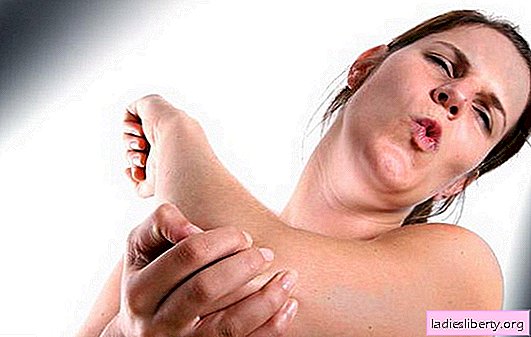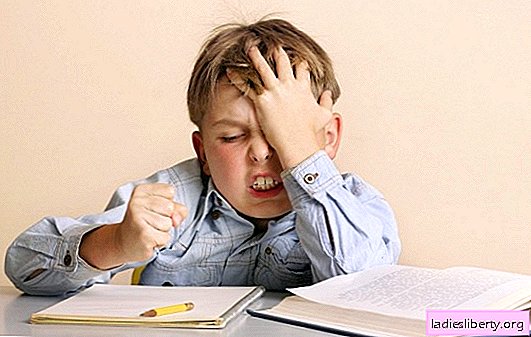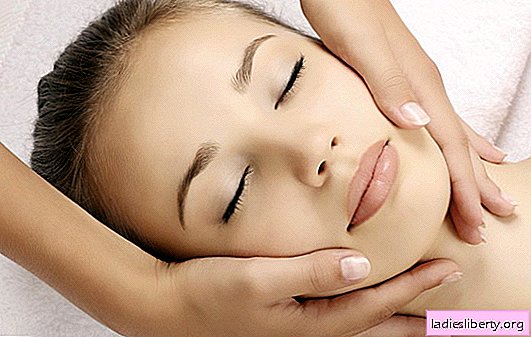
Elbow pain is one of the most unpleasant, as the elbow joint is very sensitive to injuries and bruises.
This article will examine in detail what to do with pain in the elbow, how to treat them correctly, and also how to prevent the occurrence of possible complications.
Primary symptoms of bruised elbow
Depending on the severity of the injury, after a bruise of the elbow, a person may suffer from such symptoms:
1. A strong pain syndrome in the elbow area, which can be given to the shoulder joint and palm (this is especially common if nerve endings have been affected).
2. Swelling in the place of injury.
3. Pain when bending the arm, as well as at rest.
4. Hematoma or blue in the injured area of the elbow.
5. Partial impaired mobility of the hand.
With a bruised elbow joint, it is important to understand that this is precisely an injury, not a fracture. As a rule, with a broken bone or crack, the arm in the elbow joint hurts much more. Also, its mobility is almost completely lost. In especially severe cases (with an open or displaced fracture), a broken bone can be felt under the skin of the victim.
First aid for bruised elbow
First of all, with a bruise of the elbow joint, you need to try to stay calm, since panic and unnecessary worries will not help here.
First aid for bruising the elbow includes the following procedure:
1. Inspect the elbow.
2. If blood appears on it, then rinse the wound with hydrogen peroxide and apply a sterile dressing.
3. Apply a cold compress to relieve pain.
4. Fix the elbow in a stationary state using a bandage or an ordinary scarf (wrap the victim’s hand in the chest and throw the bandage over his neck).
If after two hours the pain does not decrease, and a severe edema or hematoma forms on the damaged elbow, then you need to urgently contact a trauma center.
Elbow hurts for no apparent reason: diagnosis
Sometimes the elbow hurts for no apparent reason. In this case, do not postpone this problem for a long time and consult the following specialists:
• rheumatologist;
• traumatologist;
• to a neurologist.
After the examination, the doctor will decide which area the disease belongs to and prescribe diagnostic procedures.
The list of mandatory examinations for pain in the elbow includes:
• arthroscopy;
• X-ray of the elbow joint;
• Magnetic resonance imaging;
• Ultrasound of the elbow joint.
Also, to collect an anamnesis and get a complete picture of the condition of the subject, the doctor can prescribe him such tests:
• general blood analysis;
• general urine analysis;
• blood biochemistry;
• blood test for sugar level.
Most often, pain in the elbow is caused by such diseases:
1. Internal epicondylitis. In this condition, the person’s muscles and tendons become very inflamed. Pain in this case can occur with any physical exertion.
2. Bursitis is a disease in which the joint bag of the elbow becomes inflamed (it connects the three bones in the entire joint). As a rule, the appearance of bursitis is facilitated by previous injuries, fractures and bruises, which were not well treated enough.
3. The development of the tumor is one of the most dangerous conditions, so it is very important to diagnose on time.
4. Osteoarthrosis, rheumatoid arthritis, tendonitis and gout often become a problem of elbow pain, especially in the elderly. Such conditions are dangerous in that they can completely limit movement in the joint.
5. Synovial chondromatosis and dissecting osteochondritis. With such diseases, cartilage formations are found in the elbow joint. They can move freely inside the joint.
6. Diffuse fiscitis, in addition to pain, can cause numbness of the skin.
7. Nerve injury is considered the most painful diagnosis, in which even the slightest movement of the hand can cause a person tremendous pain. Osteochondrosis or intervertebral hernia usually leads to nerve damage.
In addition, the elbow can also hurt from diseases of the cardiovascular and central nervous systems:
• coronary heart disease;
• hemophilia;
• neuritis.
Elbow hurts: treatment
Treatment of diseases of the elbow joint is carried out comprehensively. It includes such therapies:
• drug treatment;
• physiotherapeutic treatment;
• physical procedures;
• local treatment.
Drug therapy (depending on the specific disease) involves the use of such drugs:
1. Anti-inflammatory drugs (Nimesulide, Meloxicam, Disclofenac).
2. Painkillers and analgesics (Nise).
3. Anti-rheumatic drugs.
4. Injections with hyaluronic acid.
5. Corticosteroids.
6. Decongestants.
7. Sleeping pills (for severe pain).
These drugs can be prescribed to the patient in the form of tablets, gels, ointments, droppers and injections. The doctor himself must decide which form of the drug the patient will use, depending on the condition of the patient, his age, concomitant diseases, etc.
It is important to know, that this or that drug can only be prescribed by the attending physician after the diagnosis of the patient. It is impossible to take medicines for joint pains on your own, since an incorrectly calculated dose can cause unwanted side effects.
Physiotherapeutic treatment includes the following procedures:
• magnetotherapy;
• barotherapy;
• mud wrap;
• electrophoresis;
• acupuncture;
• massage;
• ultrasound therapy;
• phototherapy;
• ozokerite;
• phonophoresis;
• cryotherapy;
• wave therapy.
Usually spend no more than 10 sessions of physiotherapy procedures. Each such procedure is selected individually for each patient, depending on the severity of his illness and the symptoms observed.
If the patient’s condition does not improve, then re-diagnosis is carried out and the doctor changes the treatment tactics.
Local treatment involves applying to the patient's elbow cooling or warming compresses from Dimexide, Ketorol and Lidocaine (depending on the type of disease). It is also permissible to apply ointments and gels (Diclac gel, Dolobene gel, etc.).
The correct use of compresses will have such a therapeutic effect:
• relax muscles;
• relieve swelling;
• reduce the inflammatory process;
• relieve pain
• improves blood circulation.
If the patient is constantly worried about pain, then he needs bed rest and a complete rejection of physical exertion.
Physical procedures provide for the implementation of therapeutic charging. It is aimed at restoring mobility to the joint and should be used after drug treatment.
Regular exercise can provide such a therapeutic effect:
• relieve pain;
• strengthen muscles;
• reduce fatigue;
• improve blood circulation.
Elbow hurts: how to prevent complications
It is important to know that prolonged pain in the elbow after a bruise can cause serious complications. The most dangerous of them are:
• hemarthrosis (accumulation of blood in the joint cavity);
• neuritis;
• tissue necrosis;
• purulent arthritis;
• complete cessation of mobility of the elbow.
These conditions will require immediate surgical intervention, which will only prolong the rehabilitation process.
In order to prevent complications and bruises of the elbow, you should adhere to such recommendations:
1. Before lifting weights, you should always do warm-up hands.
2. In time, pay attention to pain in the elbow and consult a doctor.
3. Carefully (without sudden movements) to lift weights and engage in any physical activity.
4. When sedentary work, in which the hands are always in the same position, you need to periodically do warm-ups and self-massage to prevent stagnation in the joints.
5. In time to treat infectious diseases (tonsillitis, sinusitis, flu), as they affect the condition of tendons and cartilage.
6. Do not self-medicate injuries and bruises, but seek medical help on time.
7. Take calcium in tablets, as well as vitamin complexes in the offseason, when the body does not get all the necessary substances.
8. Balanced to eat. The diet should be rich in calcium, magnesium and potassium. These substances will help strengthen bones and cartilage.











